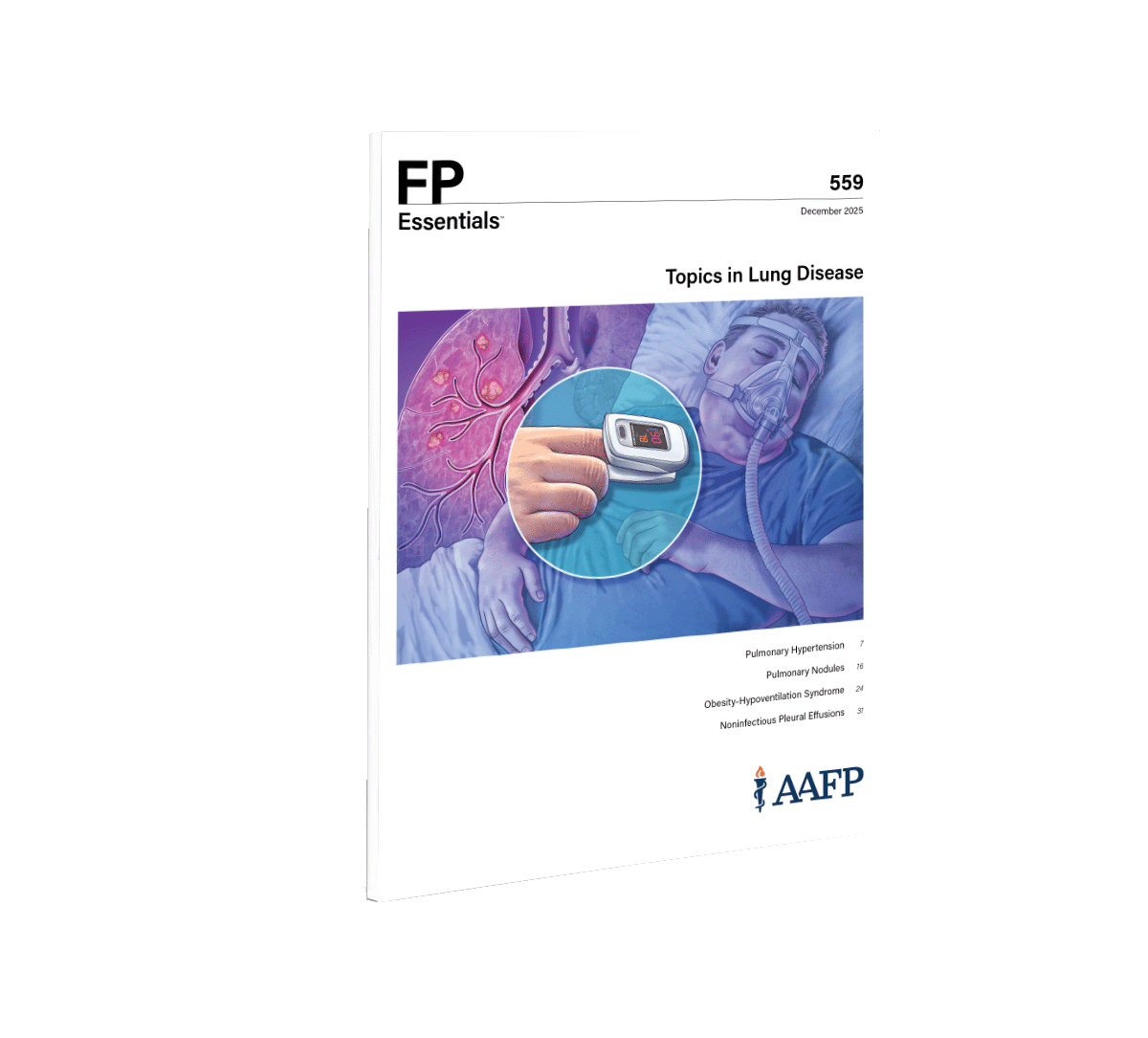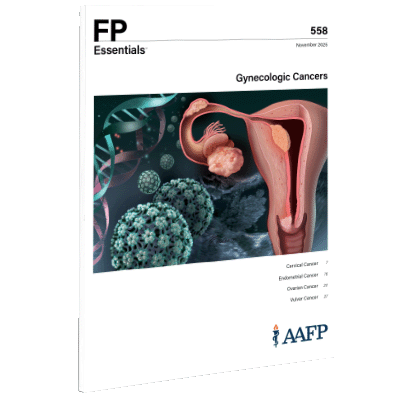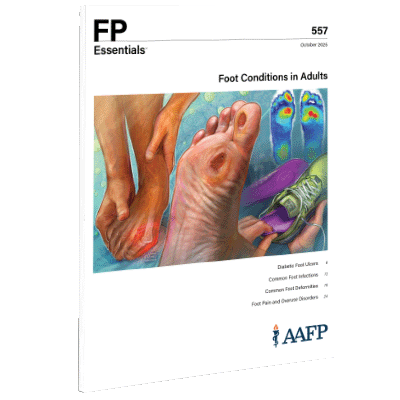
Current Edition
Pulmonary Hypertension
Pulmonary Nodules
Obesity-Hypoventilation Syndrome
Noninfectious Pleural Effusions
Subscribe to FP Essentials
Peer-reviewed. Ad-free. Authoritative. Monthly monographs
focused on new diagnostic methods, treatments, and guidelines.
Receive monthly editions in print and online, or online only.

Gynecologic Cancers
November 2025 | Edition #558
- Cervical Cancer
- Endometrial Cancer
- Ovarian Cancer
- Vulvar Cancer

Foot Conditions in Adults
October 2025 | Edition #557
- Diabetic Foot Ulcers
- Common Foot Infections
- Common Foot Deformities
- Foot Pain and Overuse Disorders
Earn CME with FP Essentials
Take the CME Quiz and earn 5 CME credits per edition.